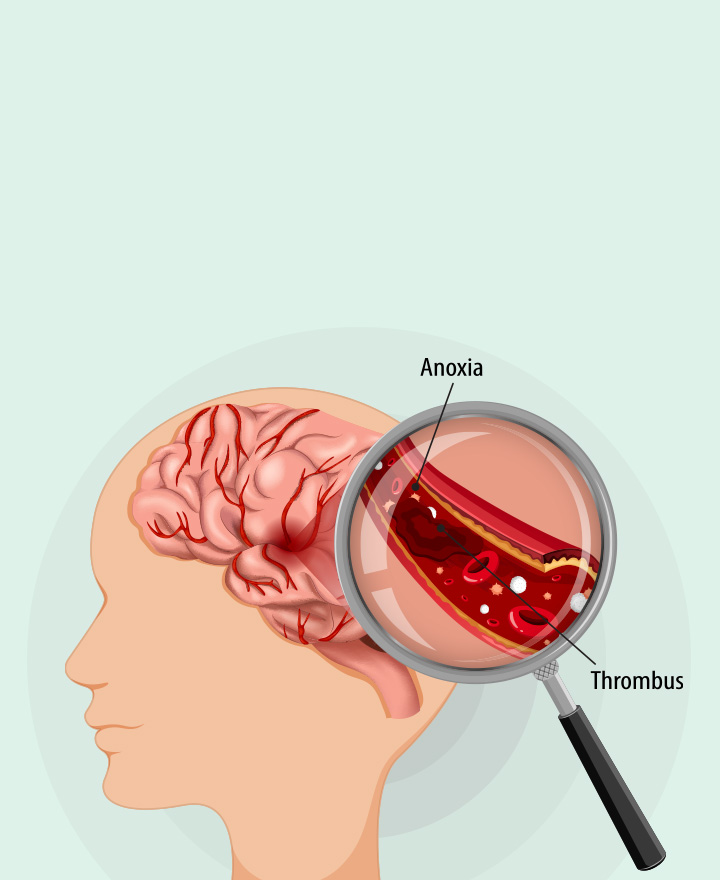

Brain Tumour: Everything You Should Know
A collection of abnormal cells in the brain is known as a brain tumour and they can be either, benign or malignant. Depending on their origin, they may also be categorised as primary and secondary brain tumours. If a tumour isn’t addressed in time, it can grow and put pressure on the skull. Hence, irrespective of whether the tumour is benign or malignant, it must be addressed as early as possible. Now, let’s look at the common brain tumour causes, brain tumour symptoms as well as the forms of treatment available.
Brain Tumour Causes
While the exact cause is unclear, there are certain factors that can increase a person’s risk of developing such a tumour. These are:
• Genetics
In 5-10% of all brain tumour cases, the individual belongs to a family where another family member has also been diagnosed with some form of brain tumour.
• Age
The risk of a brain tumour increases with age.
• Exposure to chemicals and radiation
Exposure to certain types of chemicals and radiation can increase a person’s risk of developing brain tumour.
• No history of chickenpox
Not having chickenpox as a child can increase an individual’s risk of developing a brain tumour at a later age.
Brain Tumour Symptoms
The symptoms can vary greatly depending on the size, location, type and speed of a tumour’sgrowth. Some of the most common signs are:
• Frequent, severe headaches
• Tiredness
• Imbalance
• Visual disturbances such as blurred vision, loss of peripheral vision or double vision
• Confusion and indecisiveness
• Inability to focus on simple commands
• Difficulty hearing
• Clumsiness
• Unexplained changes in behaviour and personality
• Loss of sensation in the limbs
• Loss of control over the bladder/bowel
• Seizures
Diagnosing a Brain Tumour
When you consult a doctor with the above range of symptoms, they will ask for your medical history and conduct a detailed physical examination to check the cranial nerve connections. Your eyes will also be examined to see how the pupils react to light and to check for any swelling of the optic nerve. They will also test your memory, muscle strength, coordination and ability to do simple mathematical calculations.
This may be followed by multiple tests, including:
• Brain CT scan
This will give the doctor a more detailed view of the brain.
• Brain MRI
An MRI will offer a detailed view of the brain structure without any risk of radiation exposure.
• Angiography
This involves administering a dye into the bloodstream that travels to the brain and gives the doctor a clear view of the blood supply to the tumour. This test is usually conducted before surgery.
• Skull X-rays
This is used to assess the possibility of a skull fracture or calcium deposits caused by the tumour.
• Biopsy
This involves removing a small part of the tumour and testing it to see whether it is malignant or benign. It can also help identify the origin of the tumour.
Brain Tumour Treatment
Each tumour is treated differently depending on the size,type and location of the tumour, as well as the patient’s overall health.
If the tumour is accessible, surgery is often the most preferred choice of treatment. This is aimed at removing as much of the tumour as possible without damaging any of the healthy brain cells. Even partial removal of the tumour can be beneficial.
Surgery may be combined with chemotherapy or radiation. These forms of treatment may be prescribed before surgery to shrink the tumour or after surgery to kill all the remaining tumour cells. Chemotherapy involves the use of oral or intravenous drugs that target the tumour cells. Radiation kills tumour cells with the help of high-energy beams directed at the tumour from a machine outside the body, or in rare cases, from a machine placed near the tumour.
In case of metastatic tumours, i.e., tumours that originate in other parts of the body, treatment of the brain tumour is based on the treatment of the origin tumour.
Each form of treatment has its own advantages and risks. It is important to be aware of these factors and discuss them with your doctor before you go ahead.
Rehabilitation after Treatment
Depending on the location of a brain tumour, certain skills such as vision, motor skills, speech, etc. may be impaired. Hence, the removal of the tumour may be followed by rehabilitative therapies such as physical therapy, speech therapy, occupational therapy or special tutoring.
Conclusion
All in all, being aware of the risk factors and brain tumour symptoms can help you seek medical help on time. And in many cases, the right treatment option can do wonders. Just remember to discuss everything with your doctor beforehand and get an idea as to how much time it will take for you to return to your usual life.
Source: Healthline, Mayo Clinic, Cleveland Clinic
Disclaimer: This blog provides general information and discussions about health and related subjects. The information and other content provided in this blog, website or in any linked materials are not intended and should not be considered, or used as a substitute for, medical advice, diagnosis or treatment. Kindly contact your Doctor before starting a new medicine or health regime.
Related Articles
Obesity And Top 10 Health Risks Associated With It
Want To Boost Your Immunity? Here’s A List Of Superfoods To Keep Diseases At Bay
10 Signs Of A Weak Immune System
Published on August 23, 2022

















 Health Insurance
Health Insurance  Travel Insurance
Travel Insurance  Car Insurance
Car Insurance  Cyber Insurance
Cyber Insurance  Critical Illness Insurance
Critical Illness Insurance
 Pet Insurance
Pet Insurance
 Bike/Two Wheeler Insurance
Bike/Two Wheeler Insurance  Home Insurance
Home Insurance  Third Party Vehicle Ins.
Third Party Vehicle Ins.  Tractor Insurance
Tractor Insurance  Goods Carrying Vehicle Ins.
Goods Carrying Vehicle Ins.  Passenger Carrying Vehicle Ins.
Passenger Carrying Vehicle Ins.  Compulsory Personal Accident Insurance
Compulsory Personal Accident Insurance  Travel Insurance
Travel Insurance  Rural
Rural